The 30-Minute Emergency Readiness Audit
Sorry, we said audit not omelet.
IHH Staff
10/28/20255 min read


Greetings, Fellow Safety Seekers!
If you’re reading this, you probably have a life that doesn’t pause for hurricanes, IT outages, or the moment your laptop decides to reboot at the exact second you hit “send.” Welcome to the real world—the one where emergency plans aren’t novels you’ll finish “later”; they’re bite-sized actions you can actually complete in 30 minutes between meetings, lectures, or “my coffee is cold but I still need to pretend I’m in control” moments. We’re going to keep this practical, sharp, and just a tad sassy, as per the usual. Because readiness without a sense of humor is just fear in a box.
Why a 30-minute audit? Because grandiose plans that require a full afternoon—or six spreadsheet tabs you’ll never look at again—are meant for people who live on a peninsula of calm. For the rest of us, a fast, focused audit that delivers two or three concrete wins per area is worth more than a glossy blueprint you’ll forget to update after the next coffee spill.
Great news! We made a free audit just for you!
What are you getting with this audit?! We are glad you asked! Thankfully, not OSHA breathing down your neck and hitting you with every side eye they can! Honestly?! We think OSHA’s breath stinks, but we digress!
- A practical, repeatable framework you can run in 30 minutes!
- Six areas that matter for home and small businesses (including healthcare practices, classrooms, and dental/medical offices).
- Quick wins you can implement this week, not “in a year when the sun is in the right phase.”
- Printable templates and a digital checklist you can customize for your space and your team or household.
The six audit areas (with quick wins you can implement today)
1) Risk awareness and planning (5 minutes)
What to check
- Do you have a clear picture of the top 3 risks you actually face (not “global catastrophe” in general, but the ones you’re most likely to encounter this season in your area)?
- Is there a single owner for each risk? If not, assign one now.
- Do you have a current, easily accessible contact list (staff, students/clients, vendors, emergency services)?
Two quick wins
- Create a one-page risk map with the three most probable incidents and who owns each one.
- Attach a 24-hour contact list to your emergency folder (digital and print). Make sure someone else can reach every key person in a pinch.
2) Communications and notifications (5 minutes)
What to check
- Do you know who communicates with whom, and through which channels (internal staff alerts, client/patient updates, parent/guardian notifications for schools)?
- Is there a simple, consistent message template for emergencies (Who, What, Where, When, Why, How)?
Two quick wins
- Draft a one-sentence “emergency message” you can adapt for most situations (e.g., “We’re implementing shelter-in-place; all nonessential staff stay at their locations; we’ll update every 15 minutes.”).
- Run a quick test of one channel (text/Slack/email group) to confirm reach, timing, and tone.
3) Kits, supplies, and refresh (5 minutes)
What to check
- Do you have 72-hour kits or equivalents for the core locations (home, office, clinic, schoolroom)? Are water, nonperishable food, first aid, and essential batteries stocked and within expiry dates?
- Are important tools up to date (flashlights, radios, spare chargers, medication for staff/patients in medical settings, etc.)?
Two quick wins
- Do a 60-second expiry sweep of all kits and replace anything that’s near or past its date.
- Create a 1-page “kit snapshot” with items, quantities, and reordering points so you never guess again.
4) Evacuation, shelter-in-place, and physical defenses (5 minutes)
What to check
- Are evacuation routes and assembly points posted where everyone can see them? Are doors, seals, and basic safety features in good order?
- For clinics and classrooms, is there a simple shelter-in-place plan and a buddy system so no one is left to fend for themselves?
Two quick wins
- Mark a primary and secondary evacuation route on a floor plan and share it with everyone (print and digital).
- Assign a “safety buddy” for large teams or classes so there’s always someone responsible for accountability.
5) Data backups and important documents (5 minutes)
What to check
- Do you have offsite or cloud backups of critical data and documents (patient records, client files, lesson plans, permits, insurance documents)?
- Have you tested a restore recently, even if it’s a small file? If not, you probably don’t know if your backups actually work.
Two quick wins
- Do a quick restore test of the most critical item (most recent backup, least amount of data). If it fails, fix it now.
- Encrypt sensitive backups and store access credentials separately from the data itself.
6) Training and roles (5 minutes)
What to check
- Are roles defined for key situations? Is someone trained to take charge if the primary leader is unavailable?
- Do you have a simple drill plan and a schedule for practice (even a 15-minute weekly exercise counts)?
Two quick wins
- Pick two drills you can run this week (evacuation, shelter-in-place, or a quick communication drill) and assign roles.
- Put a 2-week training schedule on the calendar and invite attendance. If you can’t commit to 14 days, you’re not serious about readiness.
Putting it all together: the 30-minute playbook
- 0 to 5 minutes: Quick risk snapshot. Identify the top 3 risks, assign 1 owner per risk, and pull the latest contact list.
- 5 to 10 minutes: Map communications. Confirm internal and external channels, and draft a one-sentence emergency message.
- 10 to 15 minutes: Check kits and supplies. Validate expiry dates and note reordering points.
- 15 to 20 minutes: Review evacuation/shelter-in-place. Update or confirm routes, assembly points, and buddy systems.
- 20 to 25 minutes: Verify data backups and documents. Run a quick restore test and tighten backup security.
- 25 to 30 minutes: Training plan. Select two drills, assign roles, and lock in a 2-week practice schedule.
Deliverables you’ll walk away with
- A printable Emergency Readiness Action Plan, tailored to your space (home, clinic, school, or small business).
- A digital core checklist you can carry in your notes app or do in your vendor portal.
- A one-page contact and role map (who does what, when, and how to reach them).
- A brief, template-driven script for quick communications that you can adapt on the fly.
- A plan you can share with students, staff, clients, or family without needing a PhD in emergency management.
A few practical notes (the realism you deserve)
- It’s not about predicting every possible disaster; it’s about having reliable, fast-action steps for the most probable events.
- The goal is to replace panic with progress. If you can do 2–3 actions today, you’re already ahead of most people.
- Update your plan quarterly or whenever your space, team, or major risks change. A static plan is a dangerous plan
Ready to turn this into action?
- Download Health Industry Services’ Emergency Readiness Action Plan template and start your 30-minute audit today.
- If you’d like a tailored walkthrough for your specific space (home, clinic, classroom, or small business), book a quick 20 min video consult with the Health Industry Services staff! We’ll help you adapt the audit to your exact needs and verify that your plan makes sense in real life, not just in a glossy brochure!
Lead with intention and action. End with confidence. That’s how you survive the chaos with your sense of humor and sanity intact (maybe).
Until we meet again, Safety Seekers!
— Health Industry Services


